Exoplanet Populations and their Dependence on Host Star Properties#
Notes partially following Exoplanet Handbook Chapter here.
Monday, Apr. 7, 2025
astrophysics of stars and planets - spring 2025 - university of arizona, steward observatory
Today’s Agenda#
Announcements - ICA 22 is due EoD - You can drop 2 past ICAs (2m)
Reading Overview/Key Points (10m)
ICA 22 - Exoplanet + Host Star (25m)
Debrief + Share Results (10m)
Trends with Stellar Metallicity#
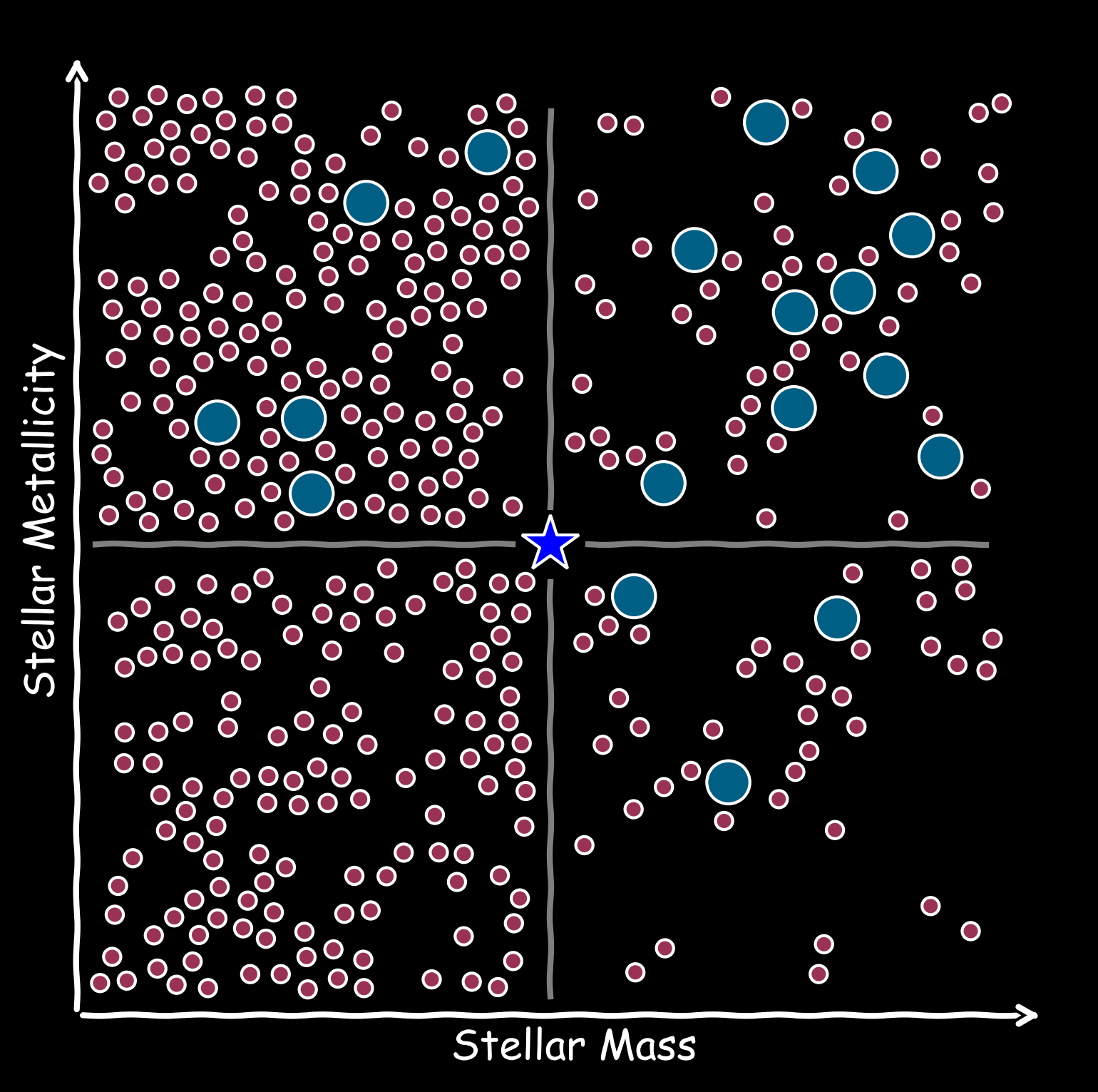
Trends in the exoplanet population as function of stellar mass and metallicity, illustrating the different behavior of the giant planet population (large blue circles) and planets smaller than Neptune (small red circles). Credit: Mulders et al 2024.
Key regimes
Low stellar mass and low metallicity: primarily sub-Neptune planets.
Low stellar mass and high metallicity: primarily sub-Neptune planets and some giant planets.
High stellar mass and low metallicity: Some sub-Neptune planets and some giant planets.
High stellar mass and high metallicity: Mixture of sub-Neptune planets and giant planets.
Positive Giant Planet-Metallicity Correlation#
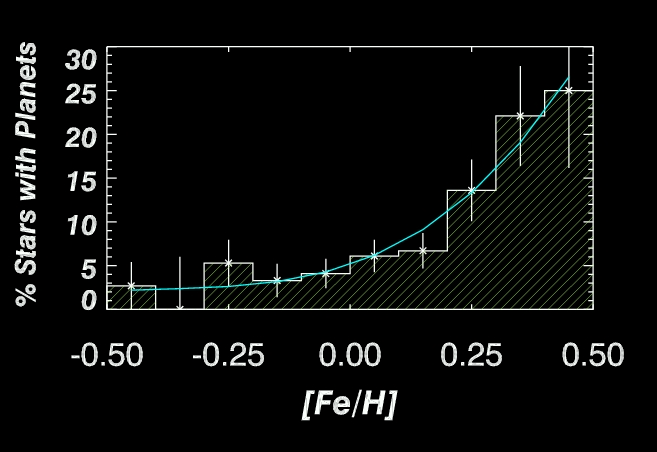
Giant planet occurrence rate as function of stellar metallicity. Credit: Fischer and Valenti (2005).
Observation 13
Giant planets occur more frequently around stars with higher metallicities.
One of the leading theories to describe this trend is that of primordial origin:
The metallicity of the host star is representative of the primordial cloud from which it formed.
Implying that in a high-metallicity protoplanetary disk, giant planets form more easily.
This theory is supported by the core accretion planet formation theory:
Recall:
core accretion - a bottom-up process:
the formation of giant planets begins with a rocky/icy core (10–15 \(M_{\oplus}\))
gas is accreted onto the core in a runaway process, until it has cleared its orbit or the gas is removed from the disk.
if this disk has a higher metallicity (more grains), the metal cores would be more easily built before the gas in the disk is lost.
The Giant planet–metallicity correlation is thus an important piece of observational evidence in support of this scenario. Osborn & Bayliss, 2019. Less massive planets (sub-Neptune) show a wider range of distributions accross metallicity.
Trends With Stellar Mass#
The correlation between planet occurrence and stellar mass is dependent on planet size.
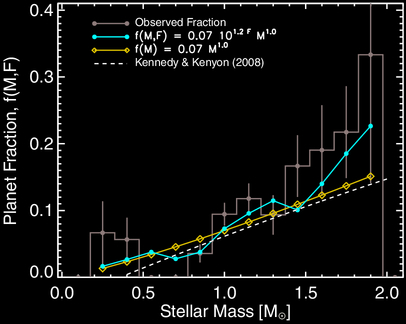
Giant planet occurrence as function of stellar mass. Credit: Johnson et al. (2010).
Giant planets occur more frequently around higher-mass stars. Sub-Neptunes, those found in abundance with the Kepler survey, occur more frequently around low-mass M dwarfs.
We can look at this in more detail at a bifurcation mass of \(M_{host}\sim0.34M_{\odot}\):
\(M_{host}\lt0.34M_{\odot}\)
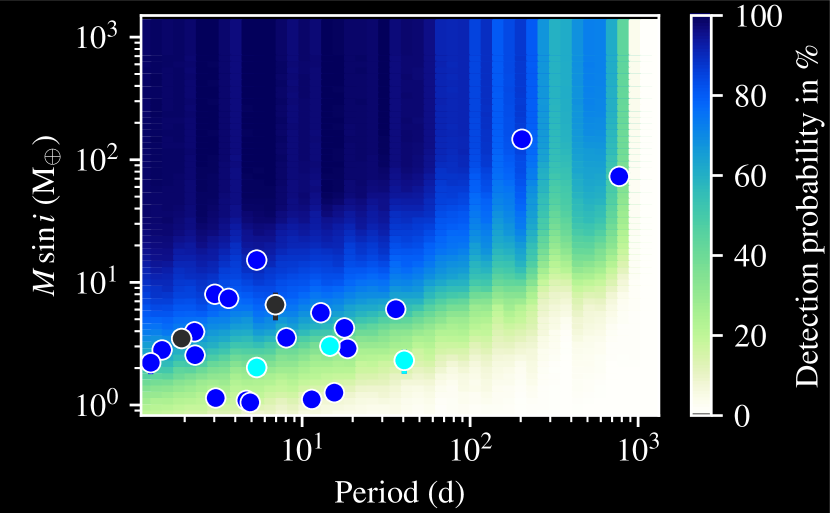
\(M_{host}\gt0.34M_{\odot}\)
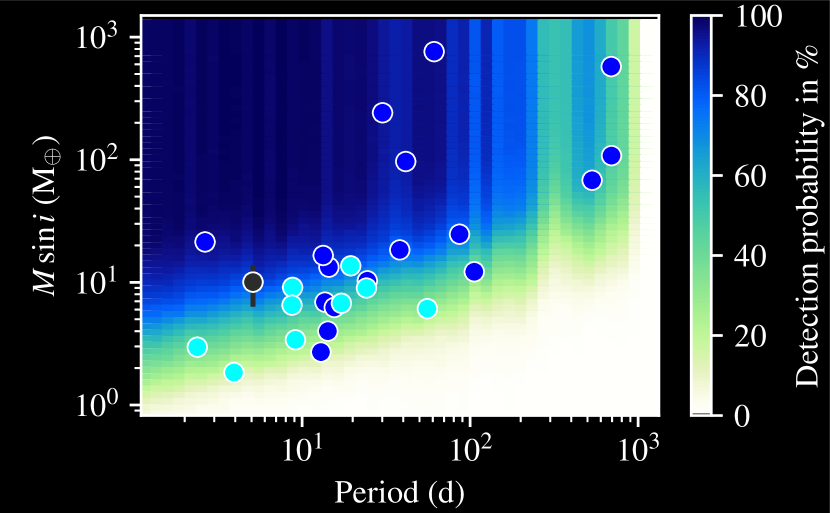
We can observe few giant planets for \(M_{host}\gt0.34M_{\odot}\) in our sample, with sub-Neptune planets abundantly in systems with less massive M dwarf host stars \(M_{host}\lt0.34M_{\odot}\). These planets also tend to be smaller and orbit closer to the host star.
In-Class Assignment 22#
In-Class Assignment 22 can be found here.


